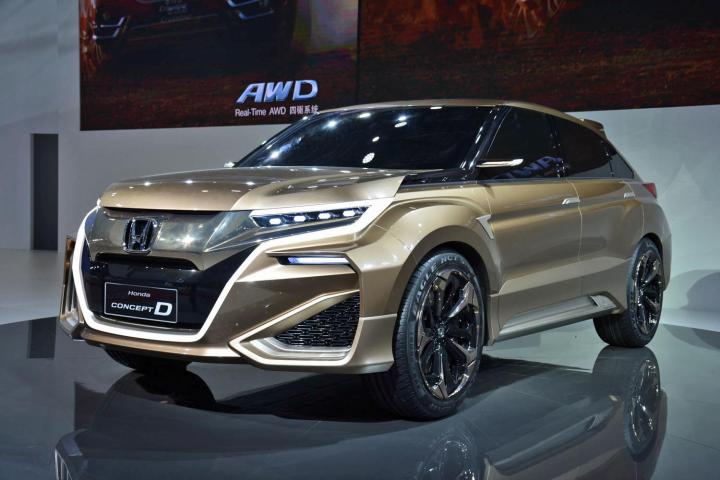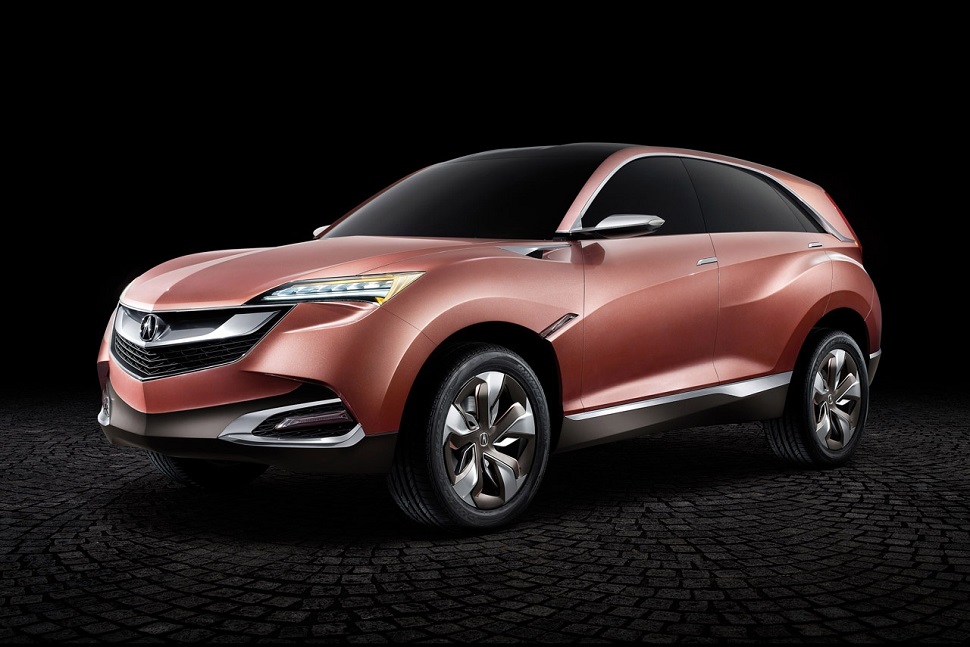
The yet-unnamed model was previewed by the Concept D (pictured above) that Honda revealed at last year’s edition of the Shanghai Auto Show. Positioned a notch above the CR-V, the crossover will receive a new front end in its transition from a concept to a production model, but it’s expected to retain the Concept D’s pronounced wheel arches and rakish, almost coupe-like silhouette.
Power will exclusively be provided by four-cylinder engines borrowed from the Honda parts bin, and buyers will be asked to choose between two- and four-wheel drive. Production will take place in China. At the time of writing, it doesn’t sound like Honda’s newest soft-roader will be sold in the United States, in Europe, or even in the car maker’s home country of Japan.
Acura, Honda’s luxury division, will also unveil a crossover in the Chinese capital. Motor Authority reports the model will essentially be a toned-down version of the pocket-sized SUV-X concept (pictured below) that was shown three years ago in Shanghai. Likely called C-DX, it will wear a less futuristic-looking design that will borrow a handful of styling cues from Acura’s latest design language.
The C-DX will share a handful of components with the HR-V, Honda’s entry-level soft-roader, and it will be positioned at the bottom of Acura’s crossover lineup as an alternative to the Mercedes-Benz GLA. Unlike the Concept D, the C-DX is likely to join Acura’s North American lineup in the coming years. Surprisingly, production will allegedly take place in China.
Honda and Acura are expected to unveil their upcoming crossovers online in the coming weeks. The series-produced version of the Concept D will go on sale in China before the end of the year, but we might not see the C-DX touch down on US soil until the 2018 model year.
Editors' Recommendations
- Audi GrandSphere concept shows how autonomy opens new design avenues
- New York Auto Show postponed due to coronavirus concerns
- What I saw at the LA Auto Show gives me hope for humanity
- Acura adds some supercar touches to its MDX family crossover
- Everything to get excited about at 2019 LA Auto Show





